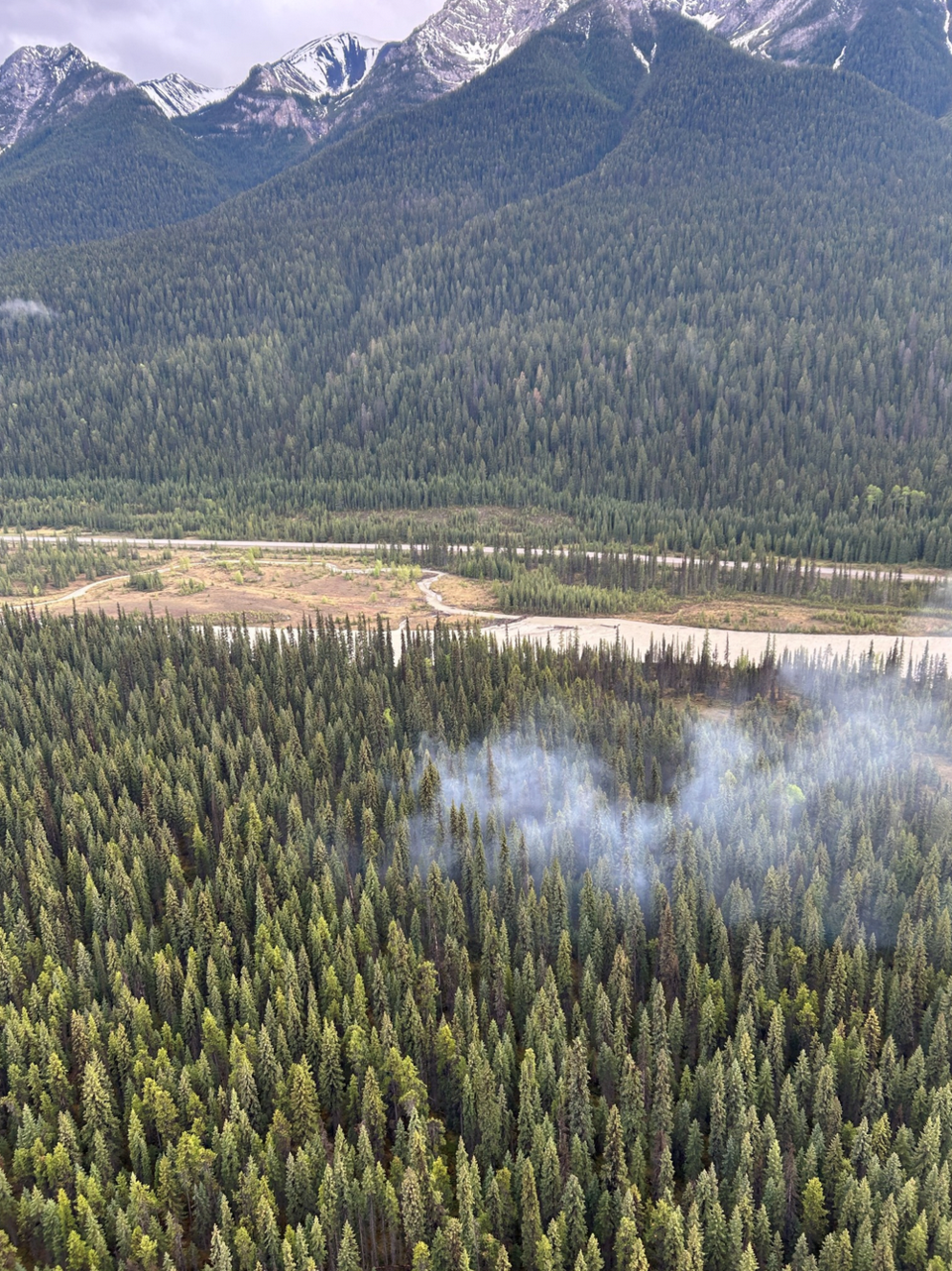KOOTENAY NATIONAL PARK – Parks Canada initial attack crews are working to extinguish a lightning-caused wildfire in Kootenay National Park.
The wildfire, which was sparked about 10 km northwest of Dog Lake on Thursday night (May 29) when a storm rolled through the mountains, is classed as out of control, though it is currently less than one hectare in size.
Parks Canada officials say this means that the wildfire is actively burning, has not been contained and is expected to spread; however, they say there is no threat to public safety or buildings.
“An initial attack fire crew and a helicopter bucketing water worked into the evening. The area also received approximately 5mm of rain,” according to a Parks Canada social media post.
“However, smoke and a helicopter bucketing water to the area will be visible from Highway 93 south on Friday as an initial attack crew works to extinguish the fire.”
Parks Canada will provide an update when information of note is available.
Wildfires, illegal campfires or suspicious smoke can be reported to Parks Canada emergency dispatch at 403-762-4506.
Parks Canada asks people to not call dispatch for updates on wildfires.
“This reduces resources for emergency events,” states the post.
Over the past 20 years, fire has burned approximately 25 per cent of Kootenay National Park.
Lightning strikes start most of the wildfires in Kootenay National Park, including the prominent ones of the past 20 years such as the 2003 Tokumm-Verendrye blaze, the 2017 Verdant Creek fire, the 2018 Wardle Creek fire and the spring 2023 Mitchell Ridge fire.
Up until the early 2000s, there was very little fire in the previous 80 years in Kootenay National Park, with the exception of the 1968 Vermilion fire that burned 1,500 hectares in Kootenay and 500 hectares in neighbouring Banff National Park.
But there were more historically based on direct evidence of fire, which can be found in scarred trees, burned stumps or logs, or charcoal in the duff layer of the soil.
Studies have shown that due to decades of fire suppression and climate change, the natural fire regime has been altered from a more frequent low to moderate fire regime in Kootenay National Park to less frequent but higher intensity fires.
For example, the 2003 Tokumm-Verendrye fire in Kootenay, which was dubbed “The Holy Shit” fire, burned approximately 16,000 hectares, 41 per cent resulting in high burn severity.
Kootenay National Park has very diverse temperature and precipitation ranges, with the southern end of the park getting significantly less precipitation than the north in Vermillion Valley and is also 2 Celsius to 6 Celsius warmer.
“This creates a longer fire season in the south of the park as snowmelt occurs in this area as early as March,” states Parks Canada’s 2020 integrated fire management plan.
“Temperatures and precipitation in the north of the park are similar to Banff as they near the Continental Divide.”
Kootenay National Park also sees a lot more lightning-sparked fires than Banff, largely influenced by the Continental Divide and lifting of air masses as low pressure systems track from British Columbia into Alberta.
According to Parks Canada’s integrated fire management plan, Kootenay National Park typically experiences the highest number of lightning-caused wildfires over Banff and Yoho, with 71 per cent of all fires sparked by lightning accounting for 90 per cent of the total area burned.




